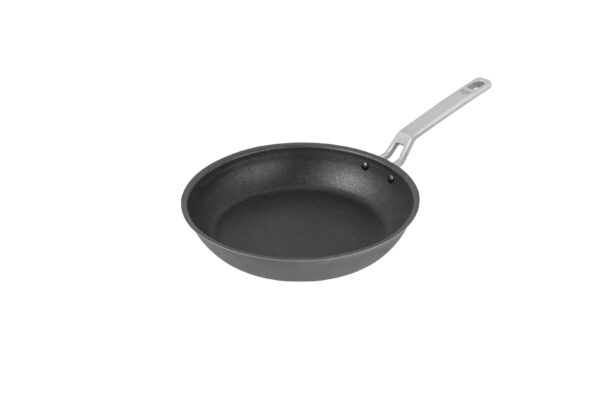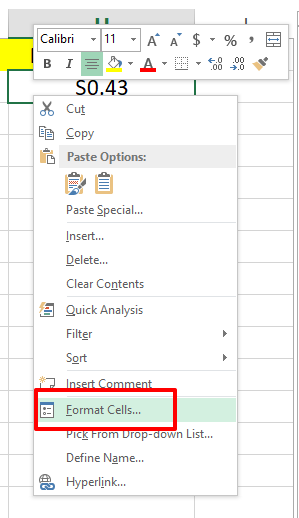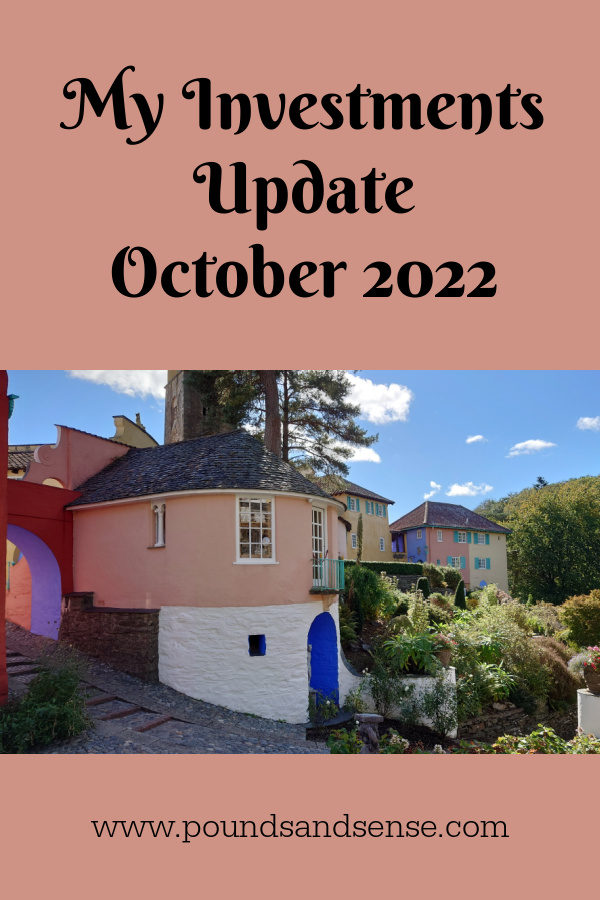Mother’s Day 2023 Gift Guide and Giveaway!
Spring is in the air, so it’s time for another great giveaway on Pounds and Sense! This one is themed around Mother’s Day, which this year is on Sunday March 19th.
I have clubbed together with some of my fellow UK bloggers to provide a bumper bundle of prizes that will amaze and delight any mum! As you will see, they range from an adult micro scooter and helmet to a bamboo underwear set, a luxury silk pillowcase and eye-mask to a ‘home spa’ face-and-body gift set.
The total value of all the prizes is over £550. And the best news is, it’s entirely free to enter!
This giveaway has (again) been organized by Rowena Becker, who blogs at My Balancing Act. No small amount of effort has been involved in arranging and co-ordinating this event, so many thanks again to Rowena for her hard work and dedication.
Without further ado, then, I’ll hand you over to Rowena to introduce the giveaway…

And we’re back! This time to spoil your mum. Or perhaps you can win yourself some treats! We have over £550 worth of incredible prizes! This is not only a giveaway but also a great Mother’s Gift Guide to help you get ideas and inspiration for your mum or the special lady in your life this Mother’s Day.
KEEP SCROLLING DOWN TO ENTER AND FOR THE FULL LIST OF AMAZING PRIZES!
The Prizes
Adult Micro Scooter and Safety Helmet
Micro Scooters are renowned for producing the most robust scooters for all the family. From toddler ride-ons, three-wheeled wonders, 2 wheel scooters for older kids plus their multi award winning adult range, there is something for every member of the family.
Founded and run by two mums, Micro are B Corp certified. Their range of eco-scooters and accessories made from recycled bottles means more families can tread lightly on the planet.
Hopping on a two-wheeled adult scooter – whether it’s to do the school run, journey to work or for weekend family time – makes it easy and fun to get from A to B. Exploring the world on two wheels is a greener, cleaner and cheaper way to get around.
THE PRIZE
-
- Any adult Micro scooter
-
- Any adult Micro scooter helmet
-
- Total prize value of £215
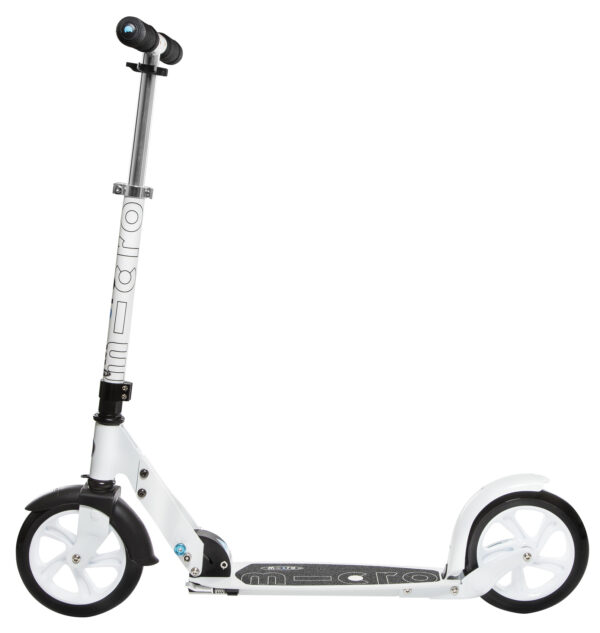
Cocoonzzz Silk Pillowcase and Eye Mask
At Belledorm, they understand the importance of a good night’s sleep. For over 45 years, this family-owned company has been dedicated to providing UK customers with exceptional bedlinen that helps them rest easy.
They don’t just sell bedding – they offer a solution. Sleep is the foundation of our daily lives, and the right bedding can make all the difference. That’s why they are passionate about providing soft, cozy, and luxurious sheets, pillowcases, and duvets that make you feel like you’re sleeping in a dream. From the moment you slip into bed, you’ll experience a sense of comfort and calm that carries you through the night and prepares you for the day ahead.
Here we are offering the chance to win a Cocoonzzz Silk Pillowcase and Eye Mask Bundle made from 100% pure mulberry grade A silk. Unlike cotton or linen, silk glides over your face and reduces the stretching and pulling that causes lines on the skin. Sleeping on silk has proven beauty benefits: it reduces lines and wrinkles, helps you wake with a hydrated glowing skin, and is hypo-allergenic and temperature regulating.
Treat yourself or your mum to the best!

Buyagift: Treat Her Gift Voucher
Not sure what to get your mum? Look no further than Buyagift! The Treat Her Gift Voucher or Experience Box is the ideal gift, with a selection of over 2,955 afternoon teas, relaxing spa days and adrenaline adventures for her to choose from. We have one Treat Her Gift Voucher for our lucky winner.
For more gift ideas for your mum, check out Buyagift’s gift guide here: Mother’s Day Gift Guide 2023

Framed Best Selling Print of your choice from ink & drop
Win a framed Best Selling Print from Ink & Drop! Our lucky winner can choose a bestselling print of their choice in 50 x 70cm size.
There’s an incredible selection of unique prints to choose from in a range of different styles, from vintage antique prints, cheeky altered art paintings, pop art, dark decor, and street art graffiti prints.
Ink & Drop’s incredible posters will look amazing on any wall and best of all, the prize will arrive already framed, ready to hang straight on the wall!

Home Spa Face & Body Set With Cosmetic Bag – Mimosa & Petitgrain
Treat your mum with this gorgeous home spa face and body gift set which comes with a beautiful cosmetic bag. This gift set includes a luxurious combination of Pure Lakes Facial and Body Skincare products for an indulgent home spa experience. It includes a Face Mask, Salt Scrub and Body Butter. The Mimosa & Petitgrain blend has both a sweetness and woodiness that balance beautifully to really infuse the senses. The set includes:
-
- Bentonite Clay x 25g
-
- Rosehip Seed Soap Free Facial Cleanser x 30ml
-
- Neroli & Geranium Flower Water Toner x 30ml
-
- Mimosa & Petitgrain Salt Scrub x 80g
-
- Mimosa & Petitgrain Shea Body Butter x 80m
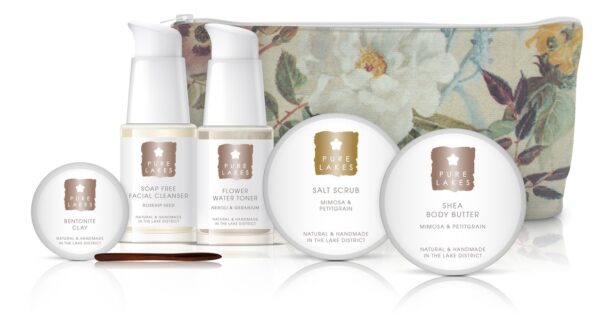
Collagen Shots from Rejuvenated
Indulge mum this Mother’s Day with Rejuvenated’s multi-award-winning Collagen Shots. The brand’s multi-award-winning collagen drink contains the perfect blend of hydrolysed marine collagen (10,000 mg,) antioxidants, vitamins and hyaluronic acid to plump, smooth and hydrates the skin. The amazing formula also helps to promote healthy blood sugar levels, strengthen connective tissue, alleviate menopausal symptoms and support joint health. We have 30 servings of collagen shots for our lucky winner.

Bamboo Underwear Set from Positive Outlook
Help all mums feel extra special this Mother’s Day with Positive Outlook. We have a gorgeous bamboo underwear set for our lucky winner. Our winner can mix and match bamboo briefs and bralettes in their desired size and colour for the perfect fit and style of their choice.
Positive Outlook’s underwear is not only extra comfortable and super stylish but also kind to the planet, making it the perfect gift for any mum who wants to secure a bright future for the planet and their children.

Crystal Candle from Wakuda
This crystal candle was lovingly made to awaken your feminine energy and celebrate all that is beautiful within us. With the beautiful home scent of aqua blossom and coral this inner goddess crystal candle smells divine and instantly teases your senses, lifts and makes you smile.
~Snow Quartz~ This stone is known for its soft feminine energy that will align your chakras and balance your yin and yang. It is a stone that represents purity and will help you connect with and appreciate your inner goddess.
~Rose Quartz~ This is the stone of universal love and self-love. Connecting to the heart chakra, the rose quartz will promote inner healing and feelings of peace while dispelling negative energy and replacing it with loving vybz.

Signed Copy of Coming Home
One lucky mum can win a signed copy of Coming Home: A Guide to Being Your True Self. This gorgeous book aims to help readers break free of self-limiting beliefs and the expectations of others. It will help you rediscover your passions and become the person you really want to be. Along with Gillian’s own story, she sets out practical exercises for readers to try, Coming Home reveals how one ordinary woman turned her life around and how others can do the same.
* As an Amazon Associate I earn from any qualifying purchases
The Bloggers
This Gift Guide and Giveaway have been organised by My Balancing Act, a busy mum’s guide to getting the most out of your days, in collaboration with the family finance blog, Savvy Dad.
The amazing UK blogs behind this giveaway all offer fantastic content from parenting, finance and recipes to travel, days out and much more! Check their blogs out below for top tips and inspiration.
Life with Jupiter and Dann | Boxnip | The Mum Diaries | Evans Crittens | The Financial Wilderness | Working Mum Life | Anything and Everything Else | Cats Kids Chaos | Joyful Bite | Just Average Jen | Live the Easy Life | Travel Lover Blog | Gift Guides | Sister Lessons | Ask Me Up | Hannah and the Twiglets | Jenny in Neverland | We Made This Life | My Life Your Way | We Made This Vegan | Missljbeauty | Spillinglifetea | Rhian Westbury | My Money Cottage | Retro Vixen | Wotawoman Diary | Catch Up With Claire | Synderella Slims | Pounds and Sense | Things that start with | Things to do in Orlando | Florist or Flowershop | Luxury Hotels and Spa Life | Fruit Picking Farms | Restaurant Thailand | Life Loving | Kundalini Center | Georgina Caro | At Home With Alice | Best things to do in Cambridge | Two Plus Dogs | Geordie Grandma | Verily Victoria Vocalises | Victoria Welton Photography | Lisa’s Notebook | A Suffolk Mum | Sustainable Business Magazine | Kelly Allen Writer | Joanna Victoria | Rice Cakes and Raisins | Everything Enchanting | Crazy Little Thing Called Love | Twins Tantrums and Cold Coffee | The Money Making Mum
How to Enter
You can enter the Giveaway by completing as many Rafflecopter widget entry options below as you like. All entries will be collected and one winner will be randomly chosen. Good luck!
Terms and Conditions
- UK entries only.
- The giveaway will run from 11:59 am on 7th March 2023 to 11.59 pm on 19th March 2023.
- The winners will be notified by email from rowena@mybalancingact.co.uk
- The winner will have 7 days to respond after which time we reserve the right to select an alternative winner.
- This prize draw is in no way sponsored, endorsed or administered by, or associated with, Facebook, Instagram, Twitter, YouTube, BlogLovin or Pinterest.
- Prize draw open to over 18s only. Age verification may be required to receive some prizes.
- If any prizes are out of stock then we will do our best to find a suitable replacement but cannot guarantee it.
- Anyone who unfollows before the giveaway ends or doesn’t complete the required entry action will be disqualified.
- The prize is non-transferable, non-refundable and cannot be exchanged for monetary value.
- We may be using a parcel service or Royal Mail for some of the prizes and their standard compensation will apply in the event of loss or damage.
- Some items may be sent directly by the supplier and we do not have responsibility if these go missing and we cannot replace them.
- In the unlikely event one of the companies withdraws a prize we cannot offer an alternative.
- The winner’s name will be stated on some or all of our bloggers’ websites and announced on Twitter and other social media channels. It will also be displayed on the Rafflecopter entry. By entering this prize draw you give your permission for this.
- Please note the winner may have the same name as you, so if you see your name displayed, be aware that you are not the winner unless you have been notified by us.
- The prizes won’t arrive in time for Mother’s Day and there may be some delays in receiving prizes.
Good luck, and I hope a Pounds and Sense reader wins this fabulous prize bundle!


















